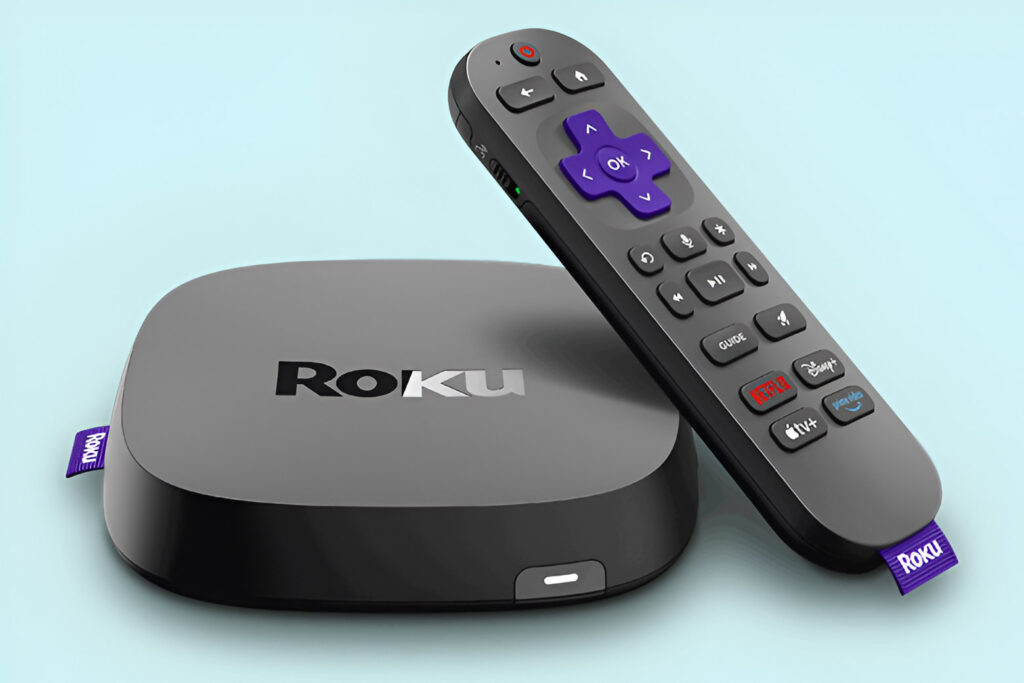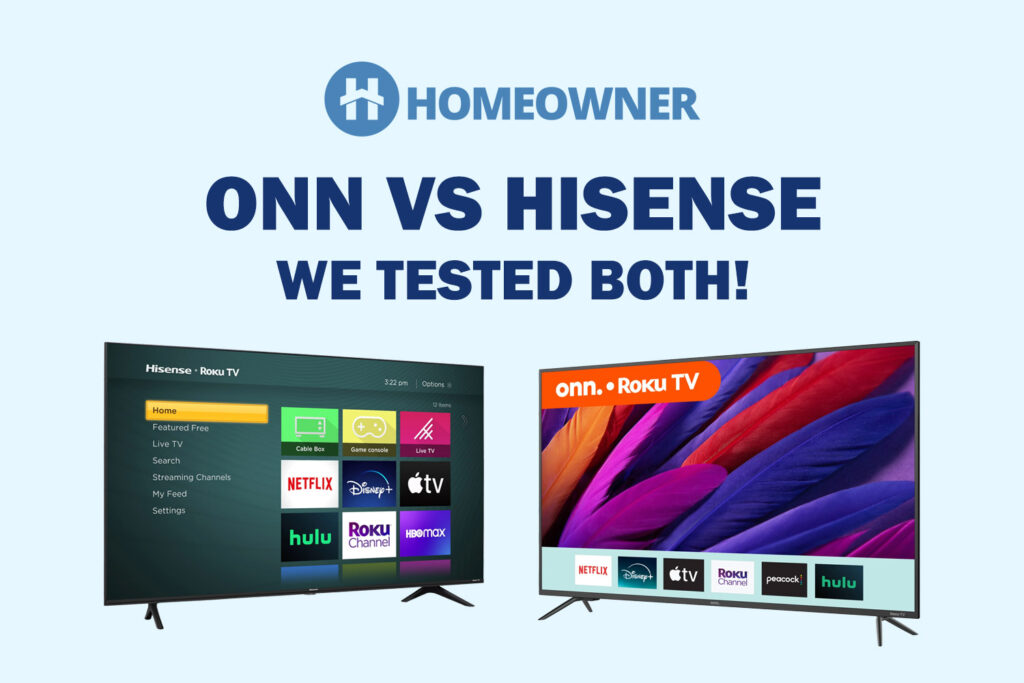If you're facing connectivity issues due to thick walls causing interference, and regular Wi-Fi extenders are not helping, a powerline adapter can be your best bet. Just ensure that your electricity cabling is up-to-date to make it work effectively.
With so many options at varying prices, it can be challenging to find the perfect powerline extender with WiFi. That's why I've curated this article to provide you with all the essential insights and the most suitable choices. So, shall we begin?
6 Best Powerline Adapters of 2025
After three weeks of usage and testing 13 unique powerline WiFi extenders under different scenarios, the final list is narrowed down to 6 highly effective devices.
Performance, connectivity options, ease of setup & management, and value for money are the primary factors weighed in for selection.
Overview: The list begins with a pricier option that caters to most requirements. It then moves to mid-range picks and ends with a cheap yet reliable option.
1. Best Overall: TP-Link TL-WPA4220 KIT
- 𝐄𝐱𝐭𝐞𝐧𝐝 𝐘𝐨𝐮𝐫 𝐄𝐭𝐡𝐞𝐫𝐧𝐞𝐭 𝐂𝐨𝐧𝐧𝐞𝐜𝐭𝐢𝐨𝐧 𝐓𝐡𝐫𝐨𝐮𝐠𝐡 𝐘𝐨𝐮𝐫 𝐄𝐥𝐞𝐜𝐭𝐫𝐢𝐜𝐚𝐥 𝐒𝐲𝐬𝐭𝐞𝐦 - This device is meant for individuals that are not able to extend their Ethernet connections where routers or range extenders do not work. Speeds cannot exceed your internet plan’s limit.
- 𝐇𝐨𝐦𝐞𝐏𝐥𝐮𝐠 𝐀𝐕𝟐 - Delivers AV1000 powerline speeds over existing electrical wiring, extending home network wired connectivity by up to 750 ft through thick walls and other barriers. Compatible with all TP-Link powerline adapters.
- Ideal for multi-story homes, basements, attics, and garages.
- 𝐆𝐢𝐠𝐚𝐛𝐢𝐭 𝐏𝐨𝐫𝐭 - provides secure wired networks for desktops, smart TVs or games consoles. Ethernet cables are included.
- 𝐀𝐝𝐯𝐢𝐬𝐨𝐫𝐲 - Adapters must be on the same electrical circuit for connectivity. Requires direct outlet plug in. Does not work with surge protectors. Speeds may be lower due to wiring quality, adapter distance, and network interference and conditions.
What brings this TP-Link Powerline WiFi Extender to the top, is its hybrid ability to support multiple wired and wireless devices. Its easy plug n’ play setup, configuration, and ability to clone settings with a touch of a single button cement its position.
Wireless & Wired Speeds
With a total capacity of transmitting up to 600 Mbps, the device is geared to extend the network over 300 meters of electrical wiring. The more modern the wiring, you're bound to get higher download speeds.
With an adapter plugged a couple of rooms away, approximately 60/75ft of wiring, my phones were clocking downloads at 81 Mbps and uploads at 11 Mbps consistently, with a 500 Mbps internet connection.
The workstation wired to the Ethernet port outperformed with 91 Mbps on downloads and 20 Mbps on uploads.
Coverage & Devices Capacity
The lack of external antennas put the WiFi part of the extender at a particular disadvantage. The two internal antennas can cover over 500 sq ft with ease. I was able to make calls even from my backyard.
The total bandwidth of the device allows you sufficient bandwidth to do light internet activities like surfing, listening to music, and calling up to 10 devices.
I had a couple of mobile phones, a tablet, and a voice assistant connected to these extenders with no trouble with connectivity. High-quality streaming and gaming did strain the overall performance.
Conclusion
If you're a medium-sized household struggling to find cover your entire household with a standalone router, this is the best powerline WiFi extender on offer. Adequate speeds, easy setup, mobile app-based management, and two wired ethernet ports despite being 100 Mbps, make it a value buy.
Pros
- 2 Ethernet ports
- Mobile app support
- Wi-Fi Auto Sync
- Plug n Play operation
- Power saving
Cons
- 100 Mbps Ethernet ports
2. Best for Gaming: Netgear PLW1000
- Gigabit PowerLINE WiFi speed up to 1000 Mbps.AC input: 100–240V, 0.2A (max.).Powerline Performance : 1,000Mbps
- Homeplug AV2 support for Gigabit speeds through your electrical outlets for improved coverage
- Energy-saving—Powers down when not connected
- Sets up in minutes, no need to install software
- Push-and-Secure—Secures network connection with the touch of a button
Moving on, Netgear PLW1000 is my runner-up WiFi powerline adapter pick. It offers higher throughput, the lowest latency, dual-band WiFi, and a sole Gigabit Ethernet port, making it a highly suitable powerline adapter for gaming.
If not for the additional Ethernet port and app-based management in the TP-Link extender, this Netgear adapter would have topped the list.
Wireless & Wired Speeds
A total throughput of 1000 Mbps split over two bands is a great advantage to houses relying on the Wireless capacity.
It can transmit internet over electrical wiring lines measuring up to 500 meters, although the speeds waned as the distance increased substantially.
The download speeds topped at 180 Mbps and upload at 45 Mbps in the wireless mode, in the annex 50ft outside my home.
The wired speed performances reassured my gaming and streaming requirement with downloads peaking at 255 Mbps and uploads at 75Mbps, with 1 Gbps Internet.
Coverage & Devices Capacity
The two external antennas allow you the freedom to extend the wireless coverage in a specific direction. It could cover up to 700 sq ft, which has no hassle in covering the two-room annex spanning 550 sq ft.
The total bandwidth capacity and dual-band operations allow you to easily connect up to 15 devices. With a combination of heavy streaming and gaming device, I still had sufficient bandwidth to support a dozen phones during weekend gaming sessions.
Conclusion
If you want reliable wireless speeds and lower latency for gaming on PC, Sony PlayStation, or mobile in your large house or annex located a substantial distance from the main building, Netgear PLW1000 is a great addition.
Pros
- Homeplug AV2 compliant
- Fast speeds & low latency
- Gigabit Ethernet port
- Supports up to 16 extenders unit
- Dual Band WiFi
Cons
- Bulky unit
- No pass-through design
3. Best OneMesh Compatible: TP-Link TL-WPA7617KIT
- 𝐄𝐱𝐭𝐞𝐧𝐝 𝐘𝐨𝐮𝐫 𝐂𝐨𝐧𝐧𝐞𝐜𝐭𝐢𝐨𝐧 𝐓𝐡𝐫𝐨𝐮𝐠𝐡 𝐘𝐨𝐮𝐫 𝐄𝐥𝐞𝐜𝐭𝐫𝐢𝐜𝐚𝐥 𝐒𝐲𝐬𝐭𝐞𝐦 - This device is meant for individuals that are not able to extend their Wi-Fi or wired connections where routers or range extenders do not work. Speeds cannot exceed your internet plan’s limit.
- 𝐇𝐨𝐦𝐞𝐏𝐥𝐮𝐠 𝐀𝐕𝟐 - Delivers AV1000 powerline speeds over existing electrical wiring, extending home network wired connectivity by up to 750ft through thick walls and other barriers.* Ideal for multi-story homes, basements, attics, and garages.
- 𝐀𝐂𝟏𝟐𝟎𝟎 𝐖𝐢𝐅𝐢 𝟓 - Dual-Band WiFi speeds of 867 Mbps on 5GHz & 300 Mbps on 2.4GHz* ensures seamless HD streaming, online gaming, and large file downloads.
- 𝐆𝐢𝐠𝐚𝐛𝐢𝐭 𝐏𝐨𝐫𝐭 - Provides a secure wired network for connected devices, such as desktops, smart TVs, game consoles, and more. Ethernet cables are included. Tip: Expand connections with an Ethernet switch (sold separately).
- 𝐀𝐝𝐯𝐢𝐬𝐨𝐫𝐲 - Adapters must be on the same electrical circuit for connectivity. Requires direct outlet plug in. Does not work with surge protectors. Speeds may be lower due to wiring quality, adapter distance, and network interference and conditions.
The dual-band frequency and mesh support in the WiFi extender through the outlet are its biggest advantages. Combining it with the capacity to support Gigabit speeds, TP-Link TL-WPA7617KIT ranks #3 on my list.
Wireless & Wired Speeds
The combination of transmitting 1000 Mbps over a powerline and a wireless bandwidth aggregate of 1200 over 2.4 GHz and 5 GHz is a substantial advantage for any household.
The download speeds on 5 GHz easily soared above 225 Mbps, where the uploads topped at 88 Mbps. The internet was approximately traversing a distance of 50 ft across a large hall.
At the same spot, the wired speeds over the Gigabit Ethernet port maxed out at 330 Mbps in a room with no heavy electrical device.
Coverage & Devices Capacity
All you have is two internal antennas in this TP-Link Powerline kit. It's capable of covering 500 sq ft. There was sufficient signal strength in my room measuring a little over 350 sq ft, including a balcony.
With two frequencies working in tandem gave room for more wireless connections. It survived the test accommodating an HD TV, laptop, tablet, google voice assistant, and a bunch of mobile phones that pushed the number into two digits.
Conclusion
If you have any of the OneMesh compatible TP-Link wireless routers at your home, the TL-WPA7617 would seamlessly work together in creating an efficient robust network at home. The App-based management and a pass-through design with a power slot are the icings on the cake.
Pros
- Dual-Band WiFi
- WPA 2 encryption
- Mobile App support
- OneMesh compatible
- Gigabit speed capable
Cons
- No external antennas
4. Best for Streaming: Tenda PH6 AV1000
- AV1000 GIGABIT PORT: With the latest Homeplug AV2 technology, PH6 provides a transmission rate as high as 1000 Mbps, allowing you to watch 4K HD videos and transfer bulky data over your existing powerline.
- ETHERNET OVER POWER: Designed with a power socket that allows as high as 16A current to passthrough, Tenda PH6 can supply power to TVs, games consoles, set-top boxes etc.
- ETHERNET OVER POWER: Designed with a power socket that allows as high as 16A current to passthrough, Tenda PH6 can supply power to TVs, games consoles, set-top boxes etc.
- ANTI ELECTRICAL NOISE: The embedded noise filter enables the PH6 kit to suppress "noise" from all connected electronic equipment to enhance network quality for multimedia streaming.
- INTELLIGENT POWER-SAVING: With built-in the latest intelligent detection function, you can save over 85% power consumption. Effectively prolong the service life of Tenda PH6.
A modified version of its predecessor PH5, the PH6 from Tenda swaps out elements of wired connectivity for its Wi-Fi capacity. Dual-band operation makes way at the price of one Ethernet port.
The hybrid combo of wired and wireless features in this price range allows it to find a way into this list.
Wireless & Wired Speeds
The powerline network extender can transmit speeds up to 1000 Mbps. It operates on dual-band WiFi capable of achieving 433 Mbps on 5 GHz and 200 Mbps on 2.4 GHz.
Traversing a powerline wiring of 40 ft to the next room, the download speeds were clocking 180 Mbps and uploads at 55 Mbps on the 5 GHz.
The wired connection was clocking 285 Mbps in download speeds and 85 Mbps on the uploads, better than what my router was capable of.
The thick walls and interference from appliances leading to the room were the major speed busters in my case. The powerline ethernet port offered a reliable connection.
Coverage & Devices Capacity
With two internal antennas, the adapter can cover rooms spanning over 500 sq ft. Add in some physical obstruction, the signal strength is prone to take a beating. The device managed to get every corner of the 450 sq ft in my range tests.
The dual-band operation comes in handy, if you have multiple devices sharing the WiFi network. Combined, I had a total of 8 devices sharing the wireless space, including tablets and an Amazon voice assistant.
Conclusion
If you are a streaming aficionado, or a gamer, relying on the stability of wired connectivity with a limited budget, this Tenda PH6 is a great buy at this price. Incorporating the wireless capacity over and above makes it a steal deal.
Pros
- Dual Band
- Homeplug AV2
- Gigabit bit speeds
- Affordable
- Easy setup
Cons
- No pass-through
- No external antennas
5. Best Wired Powerline: Zyxel G.hn 2400
- Lightning-fast speed - Powerline G.hn 2400 high speeds for seamless 4K streaming, online gaming, and other high-bandwidth activities
- Innovative Technology - G.hn Wave 2 technology ensures superior powerline performance for the PLA6456
- Integrated Power Socket - Built-in power socket ensures that no outlet goes to waste
- Smooth wired connection - Gigabit Ethernet port provides reliable and high-speed connection for your gaming console, smart TV, PC, and other devices
- ! NOTE ! - Not Compatible with Homeplug / AV / AV2 powerline products. G.hn is a different technology
If not for its lack of WiFi capacity, this Powerline adapter from Zyxel would be placed closer to the top. It's capable of transmitting multigigabit speeds through the powerline which makes it a very useful device and warrants its inclusion in this list.
Wired Speeds
This powerline adapter doesn’t sport a wireless module. You're left with a capacity of 2400 Mbps, being transmitted across 500 meters of powerline and gigabit Ethernet port. This is one of the best performers in wired connectivity.
The speeds on my gaming console crossed the halfway mark of my internet plan. The download speeds on the nearest node were 511 Mbps, while the uploads were close to 225 Mbps.
The furthest node separated by 75 ft of wiring was still raking in 90 Mbps in downloads and 18 Mbps in uploads.
Devices Capacity
Every node is capable of supporting one device via a Gigabit Ethernet port. You can combine up to 14 nodes to make a stable wired connection across the facility. The ability to prioritize the bandwidth is an added advantage.
Conclusion
Don't let the lack of WiFi undermine the capacity of this device. If you are a commercial facility offering lodging services, you can offer stable wired internet for your remote working clientele without breaking the bank or high-speed connections for 4K/8K streaming and gaming devices in your household.
Pros
- Pass through design with power socket
- QoS
- Group up to 14 nodes
- Gigabit Ethernet port
Cons
- No WiFi Support
6. Best Budget Option: TRENDnet TPL-407E2K
- Includes two TPL-407E adapters; Two adapters are needed to start a network
- NDAA COMPLIANT: With our NDAA compliant Powerline Ethernet Adapters, you can plan and install networking solutions that Government customers demand today (U.S. and Canada Only)
- MANUFACTURER PROTECTION: We stand by the quality of our products.The TPL-407E2K Powerline 500 AV Adapter Kit with Built-In Outlet is backed and supported with 3 years of TRENDnet Manufacturer Protection.
- RELIABLE TECH SUPPORT: Our team of advisors, support and tech experts are English speaking, and available for all your needs during normal business hours. We take pride in being there for our customers.
- PLUG IN INSTALL: Simply plug in TRENDnet adapters! The encrypted Powerline signal auto-connects over an existing electrical system.
This handy TRENDnet adapter steals a place at the end of the list owing to its price advantage and compact pass-through design.
Wired Speeds
The Trendnet TPL-407E2K can transmit a speed of up to 500 Mbps over the existing electrical wiring.
With an Ethernet port for every node and speeds capped at 100 Mbps, this is an ideal match for households operating on an internet speed of 200 Mbps.
The wired speeds in the adjacent room clocked close to 50Mbps in downloads and 11 Mbps in uploads. In the furthermost room, the download speeds dropped to 25Mbps and uploads at 5Mbps.
Devices Capacity
While every node comes with one ethernet port, which limits connectivity to one device in the target area. But its capacity to pair up to 8 nodes extends its application to small establishments and tightly packed apartments.
Conclusion
When you are in a neighborhood with high network congestion, this Powerline extender from TrendNet can make your life easier.
It offers you a stable wired network at a budget-friendly price. The pass-through design ensures you are not at the loss of a power slot.
Pros
- Pass through design with power slot
- Plug n’ Play setup
- Compact
- Budget-friendly
Cons
- Lack of WiFi
Frequently Asked Questions
A powerline adapter uses the existing electricity lines within the house to transmit the internet. They come in pairs. One adapter stays closer to the router with an ethernet cable plugged in and the other goes to power plug in the target area.
The device converts data to electric signals and back to the internet at the other end. For a more in-depth understanding, learn how powerline adapters work.
Yes, powerline extenders are reliable to a certain extent. Any modern electricity lines should be able to deliver decent internet speeds, although not as reliable or good as Ethernet. The quality of the internet is contingent on the quality of the electric wiring and consumption in the vicinity.
Yes, powerline adapters fare better than Wi-Fi extenders when you are extending your network in a household with thick concrete walls. As long as the wiring is good, and the wiring connects to a single phase, the performance would be reliable.
Verdict
Hope this article cleared the doubts you had about the powerline WiFi boosters. Based on the features, you can find my recommendations for some of the most common scenarios.
- Are you looking to convert your home network into a mesh-like seamless network? The TP-Link AV1000 is my top pick.
- If you are solely looking for a powerline to deliver high-speed wired connectivity, the Zyxel G.hn PLA6456 Kit would let you make the most bang for your buck.
- Are you strapped on a budget to find a hybrid device, the Tenda PH10 is the value for money buy which comes with a capacity of 1Gbps.
- Do you need more than one wired connectivity option at every node, TL-WPA4220 will be a priced possession with an easy setup, and mobile app-based management.











